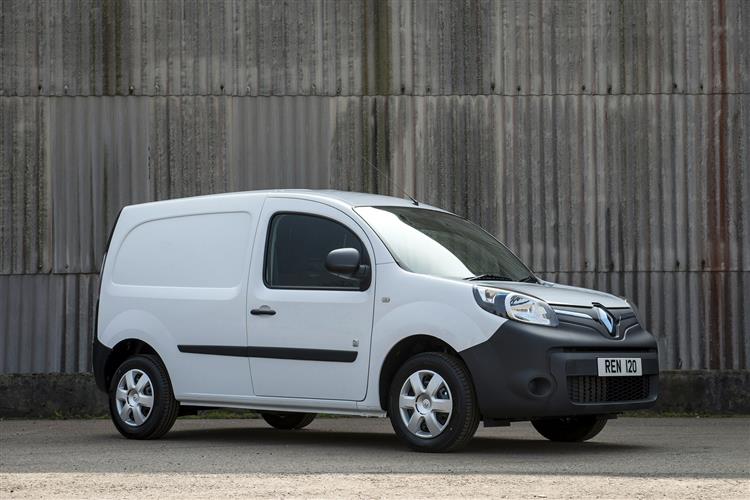This is a sample, showing 30 seconds of each section.
GOO KART (some text hidden) SECTIONED_renaultkangoovan091214
By Jonathan Crouch
Introductionword count: 84
By 2014, the second generation 'FC/FW'-series version of Renault's Kangoo van had evolved - but not beyond recognition. This 'Phase II' version was smarter, cleverer and better built. It's 'Energy' dCi diesel engines were also impressively economical, plus there was Zero Emissions all-electric technology for those wanting it. In this form, this van sold pretty much unchanged until the end of its production life in 2021. For the used customer in the market for a compact yet spacious used van, it's a strong contender.
Modelsword count: 10
4/5dr Light panel van (1.5 diesel, electric [Z.E., ML, ML+])
Historyword count: 246
By 2014, it was time to take a fresh look at the Renault Kangoo van. Though it had been on sale since 2008, the French brand had never stopped developing what was one of Europe's favourite compact LCVs. Hence the introduction in 2014 of this improved 'Phase II' model. By then, the Kangoo had been quite a success story for Renault. The first generation version was launched in 1997 to replace the boxy Extra model and had to last for eleven years before this MK2 design arrived as part of a fresh wave of more sophisticated, more car-like small vans. Over the years, Kangoo models have been built in France, Argentina, Morocco and Malaysia and sold as everything from MPVs to light 4x4s. Latterly though, the focus has been on the core panel van market, which this vehicle revitalised in 2011 by becoming the first LCV available with the option of all-electric power. By 2014 though, that technology was no longer unique in this segment. Plus there was much tougher competition in the form of all-new rivals like Ford's Transit Connect and the Mercedes Citan. The Citan was actually Kangoo-based and its development prompted Renault to make important changes to the quality and technology of this van - hence the introduction of the 'Phase II' version we're looking at here with its smarter front end styling. This MK2 Kangoo LCV sold in this form pretty much unchanged until the end of its production life in 2021.
What You Getword count: 353
If you know your Kangoos, then you'll immediately recognise this post-2014-era 'Phase II' version with its smarter front end styling that sees this more pronounced and upright Renault logo flanked by twin chrome strips and contrasted against a more stylish black grille. Whichever body style you choose - the 4.2 metre-long Kangoo Van or the 4.6 metre-long Maxi version - the cab is pretty much identical. Even on the largest Kangoo, because the windscreen is placed well forward of the driver, the impression is that you're at the helm of a much bigger vehicle than you really are. The basic dashboard design was originally lifted wholesale from the MK2 Scenic MPV, with its two-tone finish, dash-mounted gear lever and neat remote controls for the stereo on the steering column. So, which Kangoo is going to suit your business? We should probably point out to begin with that practicality isn't going to be affected by your choice of motive power. The all-electric 'Z.E.' version can take just as much as its diesel stablemates in terms of both size and weight. So it's down to body style choice, either the 3.0m3 Kangoo Van or the 4.0m3 Kangoo Maxi. Other rivals in this period can offer a little more loading room than this, but Kangoo customers can improve things by specifying the optional fold-forward front seat able boost those figures by around 0.5m3 in with both body styles. Load space length is 1476mm in this standard Kangoo Van and 1,862mm in the Maxi version. If, as we suggest you should, you've gone for a model fitted with the optional swivelling bulkhead and folding front passenger seat package, then you can increase those figures to 1,731mm - or as much as 2,886mm in the Maxi model. This vehicle's practicality may mean you'll find yourself carrying heavier loads so it's just as well that the payload allowances are reasonable. The standard Kangoo Van can carry between 650 and 800kg, depending on the version you choose. The Kangoo Maxi can carry 800kgs, though that figure falls to 740kgs if you need the people-carrying flexibility of the Crew Van version.
To see the full road test text contact us on 0330 0020 227
Pictures (high res disabled)

.jpg)
|
.jpg)
|
.jpg)
| |||
.jpg)
|
.jpg)
|
.jpg)
| |||

|
Scoring (subset of scores)
Category: Vans
| Performance | |
| Handling | |
| Comfort | |
| Space | |
| Styling, Build, Value, Equipment, Depreciation, Handling, Insurance and Total scores are available with our full data feed. | |



